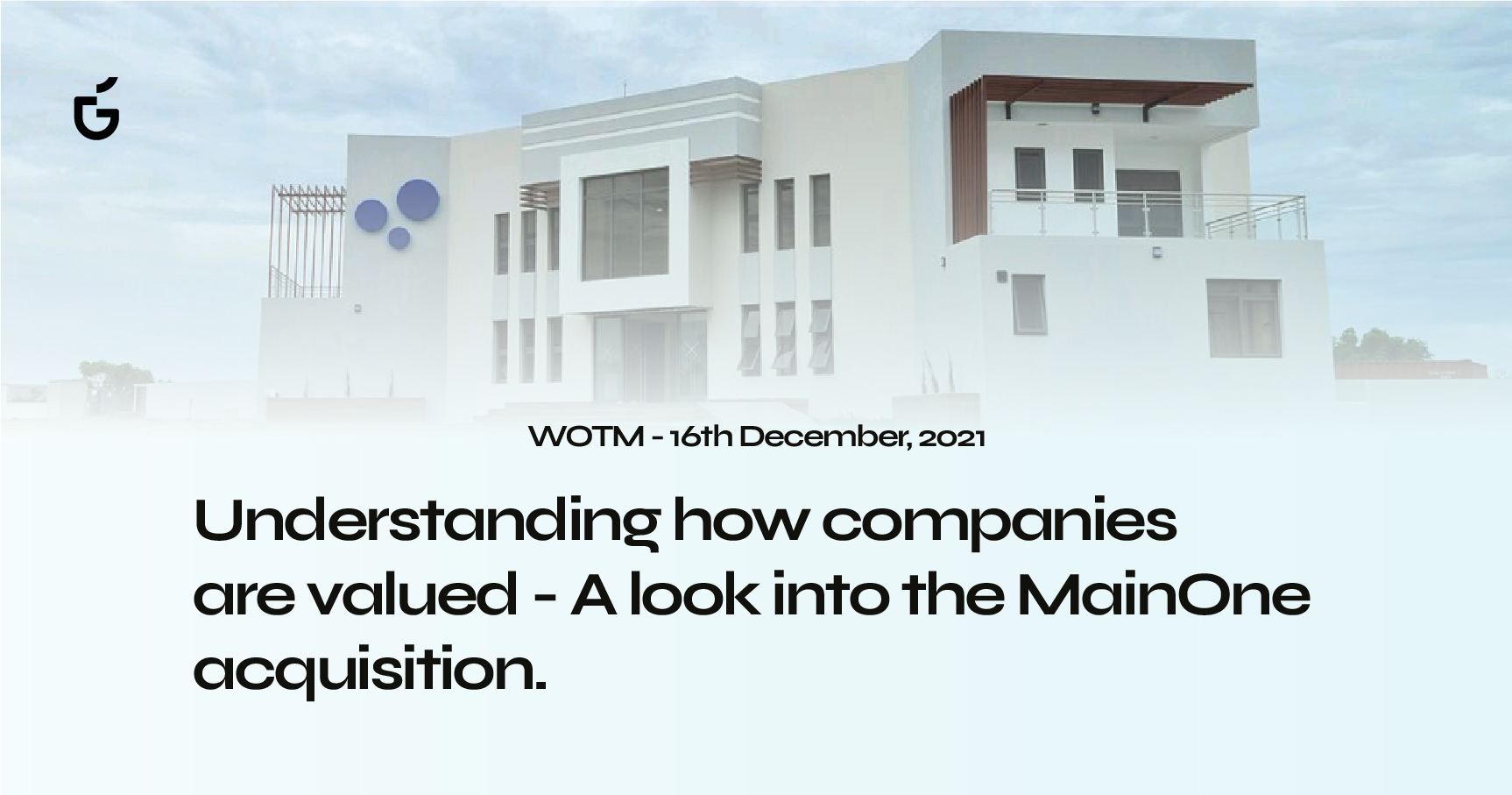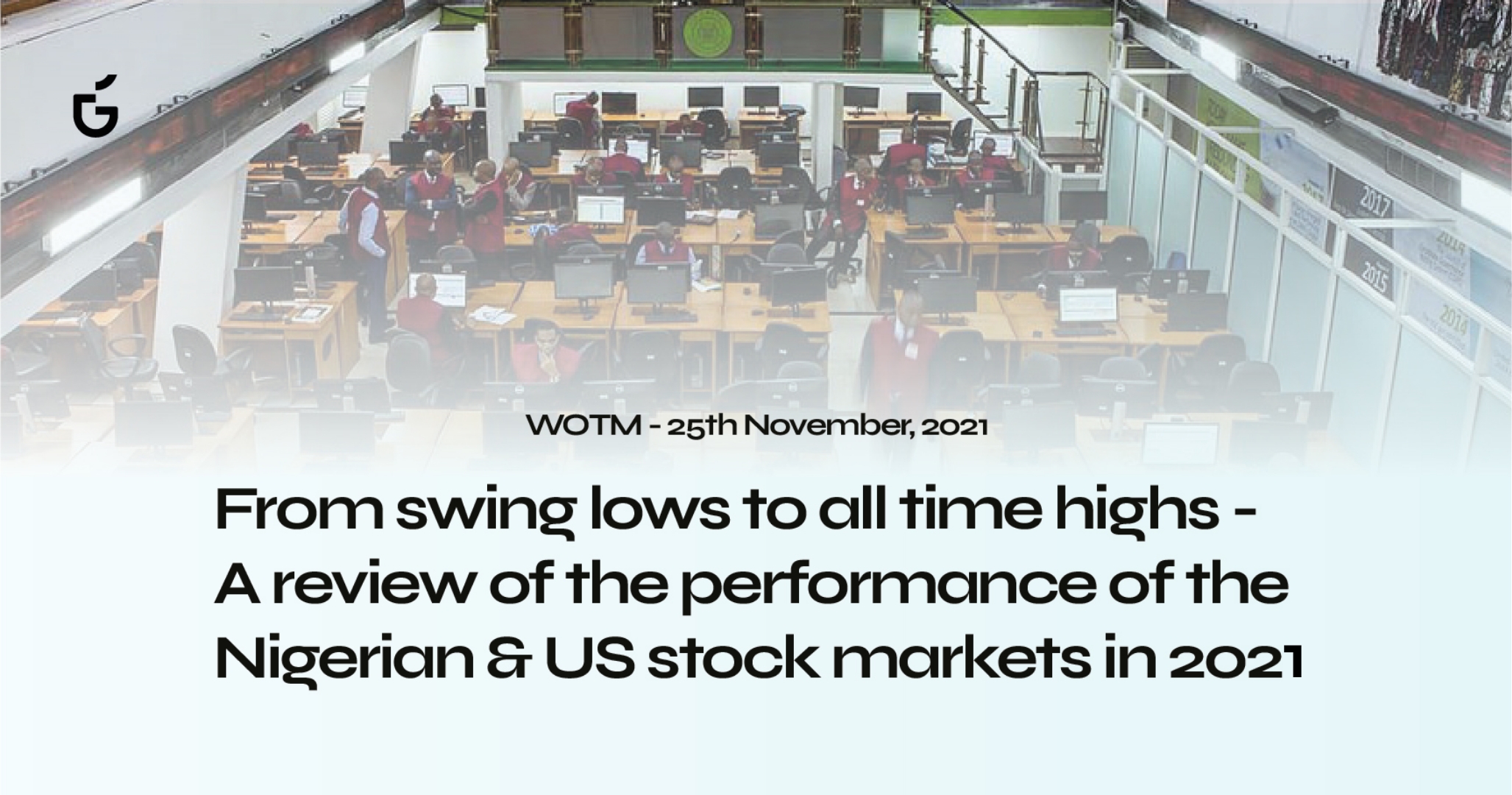 Africa
AfricaUnderstanding how companies are valued – A look into the MainOne acquisition
15 December, 2021
19 May, 2021 | 4 MINS READ
The Story
The Nigerian Communications Commission (NCC) recently announced, Starlink (The internet service subsidiary of Elon Musk’s SpaceX) is engaging the commission for the launch of its internet services in Nigeria. According to the information on the commission’s website, the commission is seeking to balance healthy competition with the entry of disruptive technologies to ensure sustainable telecoms industry growth and development in Nigeria.
Let’s backtrack;Who is Starlink? What are they about?
Starlink is a division of SpaceX. SpaceX is an aerospace manufacturer and space transportation services company in America. SpaceX was founded by Elon Musk in 2002. One of the goals of the company is to make space travel affordable or so we thought. Starlink emerged in 2020, when SpaceX expanded its operations to include the provision of satellite internet services (i.e., internet connection directly from space). So far, Starlink has launched 1,325 satellites in space to provide this service. SpaceX’s nearest competition, OneWeb, has six broadband satellites and plans to launch 30 by the end of January. Google, LeoSat Enterprises, and Jeff Bezos’s Project Kuiper are all in earlier stages of development.
Elon Musk is hoping to send 42,000 satellites to space. He is hoping those satellites will bring high-speed internet to every corner of the world— from the rainforest to Antarctica
What are the current sources of internet connectivity?
Internet connectivity has evolved over the years, from the days of National Physical Laboratory (NPL) networks in the early 1970s to high-speed broadband in the 2000s. There are different ways of connecting to the internet, some of the most common are:
Digital Subscriber Line (DSL): This is the type of internet connectivity that requires the use of telephone lines to transmit digital data. Telephone lines are used to carry signals to the DSL modem which in turns converts the signals to internet service. DSLs are also known for low speed; phone lines do not support the higher bandwidth that fiber optic and cable give.
Fixed Wireless Internet: This uses broadcast towers to transmit and receive internet signals in the form of radio waves. An antenna receives the signals and send them to a modem, which converts it to internet services. Fixed wireless towers can only send signals to about 10 miles radius of the tower.
Cable Internet: This operates in a manner similar to how a cable tv works. It uses coaxial cables (cables with common axis) that connect through a modem receiver to a nearby node, and then to the internet service provider. The modem receives electrical signals which are converted into internet service. The downside to this type of internet connection is irregular internet speeds especially in peak usage hours.
Fiber Optic: Fiber optic internet uses thin cables made of glass or plastic fibers to transfer data as light signals. It supports faster, more reliable download and upload speeds compared to DSL and cable internet networks.
Satellite: Satellite accesses the internet by connecting to satellites in Earth’s orbit. These satellites are placed in the Lower Earth Orbit (LEO) to allow for easy connectivity. They are mostly used in rural areas where there are no wireless or fiber optic connections and require a clear view of the sky for smooth transmission.
What SpaceX and Amazon are doing differently with Satellite Internet Connectivity.
There are a few players in the satellite internet network space, Viasat & HughesNet are some of the most prominent. SpaceX and Amazon are bringing something different to the table, they want to make high speed internet services available to everyone in the world.
According to BroadbandNow, a broadband comparison website, over 40 million Americans do not have access to high-speed internet connectivity. The numbers are higher in other developing countries. SpaceX’s Starlink and Amazon’s Kuiper want to solve this problem. Starlink is already beta testing (testing services within a limited area before launch) its services and the test has shown a median download speed of 70 Megabytes per second (mbps). Some reviews say it hit download speed as high as 170mbps. To put these numbers in context, the Federal Communication Commission (FCC) in the US considers internet connections above 25mbps as high speed. Though Kuiper is yet to commence operations, it intends to launch over 3,200 satellites in the next couple of years.
Unlike other satellite internet networks like HughesNet that have their satellites operating about 22,000 miles from the earth, Starlink & Kuiper have satellites designed to work at lower altitudes, their satellites work between 200 to 400 miles from the earth. This will allow them to provide high speed internet services with lower latency.
Though like Dish TV, Starlink’s satellite internet network requires a clear view of the sky to operate, it is not affected by bad weather. Advancement in antenna and receiver technologies and the closeness of the satellite to earth makes it resistant to the effects of bad weather.
What are the current challenges with internet connectivity?
Internet Service Providers (ISPs) have over the years struggled with installing broadband infrastructure in rural areas as it is difficult to scale in such areas given the cost of the infrastructure. Cost is also a challenge with satellite internet connectivity. In fact, Elon Musk said in 2020 that “Lowering Starlink’s Terminal cost, which may sound rather pedestrian, is actually our most difficult technical challenge”.
At the moment, it cost $499 (~N200,000) to buy a Starlink’s satellite dish and $99 (N40,000) monthly to subscribe for its services, this is very high when compared to what’s currently available in the internet connectivity market. These prices are expected to drop after Starlink’s beta testing stage.
High-speed internet network has become a social infrastructure in the digital age we are in. Companies looking to disrupt the market will have to device means of scaling their business while operating at a cost low enough for those at the lower ebb of society to latch on to their services. In a bid to subsidize internet services for those in sparsely populated areas in the US, the FCC awarded SpaceX $885mn to provide internet services to underserved areas in 35 states of the US. Developing countries in Africa and other parts of the world cannot yet afford to subsidize the use of internet services, so satellite ISPs still need to figure out cost if they intend to achieve their goal of high-speed internet for everyone.
The environmental effect of efficient satellite internet services is also an issue. SpaceX has gotten permission from the FCC to launch 12,000 satellites and intends to launch 42,000 satellites in total in the coming decade. Though Kuiper is yet to launch any satellites, it intends to launch about 3,200 in the low earth orbit in the next few years.
While this might increase internet connectivity, it brings up the challenge of having too many satellites close to earth. Research has shown that when some satellites malfunction or damage, the debris can cause widespread destruction. Scientists and astronomers are worried about having so many satellites in the sky as this might make launching spacecrafts harder and get in the way of telescope observations.
What Does This Mean for Other ISPs?
It has become obvious that technology will keep evolving and as it evolves, we expect it to produce better and easier ways of doing things. This is a wake-up call for players in the internet connectivity space. The market is still open to whoever can provide the fastest internet services at the lowest economic and environmental cost. Starlink & Kuiper have an advantage over others in terms of access to funds and the human resources needed to achieve this.
What’s this got to do with me as an investor?
TGIC research believes this is a good value proposition to invest in companies actively involves in ongoing innovation in internet connectivity. You’ve got two options; buy up shares of companies’ leading the innovation or invest in start-ups that have the solutions to the challenges in internet connectivity.
Investing in the digital age requires investors identifying investment opportunities in companies/start-ups spare heading disruptive innovation. However, It is also important to note that shares and private equity are risk assets. Do your research and due diligence before investing in them.
 Africa
Africa15 December, 2021
 Africa
Africa09 December, 2021
Join the biggest
investment club in Nigeria.